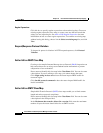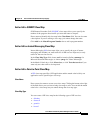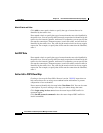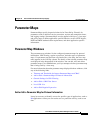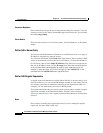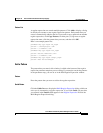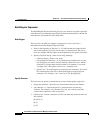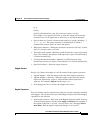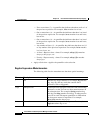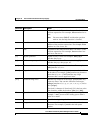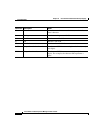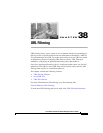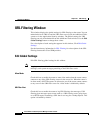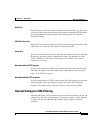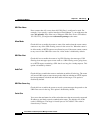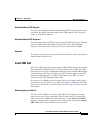
Chapter 37 Cisco Common Classification Policy Language
Parameter Maps
37-30
Cisco Router and Security Device Manager 2.5 User’s Guide
OL-4015-12
–
Zero or one times (?)—A quantifier that indicates that there are 0 or 1 of
the previous expression. For example, lo?se matches lse or lose.
–
One or more times (+)—A quantifier that indicates that there is at least 1
of the previous expression. For example, lo+se matches lose and loose,
but not lse.
–
One or more times (+)—A quantifier that indicates that there is at least 1
of the previous expression. For example, lo+se matches lose and loose,
but not lse.
–
Any number of times (*)—A quantifier that indicates that there are 0, 1
or any number of the previous expression. For example, lo*se matches
lse, lose, loose, etc.
–
At least—Repeat at least x times. For example, ab(xy){2,}z matches
abxyxyz, abxyxyxyz, etc.
–
Exactly—Repeat exactly x times. For example, ab(xy){3}z matches
abxyxyxyz.
• Apply to Selection—Applies the quantifier to the selection.
Regular Expression Metacharacters
The following table lists the metacharacters that have special meanings.
Character Description Notes
. Dot Matches any single character. For example, d.g matches
dog, dag, dtg, and any word that contains those
characters, such as doggonnit.
(exp) Subexpression A subexpression segregates characters from surrounding
characters, so that you can use other metacharacters on
the subexpression. For example, d(o|a)g matches dog
and dag, but do|ag matches do and ag. A subexpression
can also be used with repeat quantifiers to differentiate
the characters meant for repetition. For example,
ab(xy){3}z matches abxyxyxyz.
| Alternation Matches either expression it separates. For example,
dog|cat matches dog or cat.



